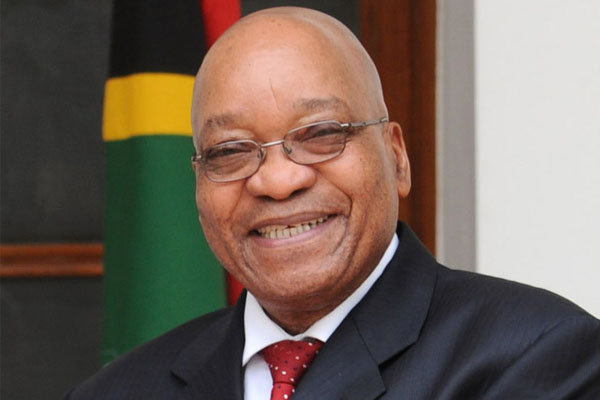
The Sunday News

Cletus Mushanawani in Tshwane, South Africa
ZIMBABWE showed Southern Africa the way to sustainable development by spearheading the Sadc Industrialisation Strategy and Roadmap, South Africa’s President Jacob Zuma has said.
President Zuma said it was imperative for the region to value-add products and boost manufacturing capacity as espoused by the path-breaking strategy and roadmap. He said this as he took over the Sadc Chairmanship from King Mswati III of Swaziland at the opening of the bloc’s 37th Summit of Heads of State and Government here yesterday.
“In line with the global development agenda on sustainable development, Sadc has — under the Chairmanship of Zimbabwe — developed the Regional Industrialisation Strategy and Roadmap (2015-2063) as an inclusive long-term modernisation and transformation mechanism. The Industrialisation Strategy and Roadmap sets out three potential growth paths, which are agro-processing, mineral beneficiation and manufacturing (downstream processing and industry and service sector value chains).”
President Mugabe pushed through the industrialisation agenda during his tenure as Sadc Chair (August 2014-August 2015) under his broad vision for Africa’s socio-economic transformation. The strategy and roadmap was discussed extensively in August 2014, and then signed at an Extraordinary Heads of State and Government Summit in Harare in 2015.
It feeds off Zimbabwe’s own economic blueprint, Zim-Asset, and fits into the African Union’s overarching development plan, Agenda 2063. President Zuma said, “It is of central importance to Sadc to add value to our resources and to grow our intra-regional trade and our regional brand. Sadc’s goal is to improve and establish manufacturing capacity, productivity and competitiveness in these sectors. The implementation of these will ensure successful transformation of regional economies from the commodity-dependent growth path to production-induced growth. This will not only raise the living standards of our people, but also facilitate the rapid catch-up of Sadc countries with industrialised and developed countries.”
He added that Sadc would promote cross-border projects with potential to strengthen regional value-chains via the Industrial Development Forum.
“The achievement of this requires a functional regional market which is key to facilitating investment. We will need to ensure that we find an effective way of promoting a rules-based trade environment that promotes certainty and stability. The implementation of commitments under the Trade Protocol have to be an integral part of this agenda so as to create an integrated market that is conducive to the development of regional value-chains.
“. . . As a new initiative, we are proposing the establishment of an Inter-state Natural Gas Committee to share learning for regional gas development and to prepare for the development of the wider gas economy. As such, the inclusion and promotion of gas into the regional energy mix will facilitate an increase in universal access to energy, as well as industrial development in Sadc.”
African Development Bank president Dr Akinwumi Adesina said African economies had shown resilience, with real growth projected to recover to 3,4 percent this year, from 2,2 percent last year.
“We must address fundamental structural challenges that have continued to hamper growth in Sadc and Africa as a whole. At the top of the list is electricity. That is why the African Development Bank is investing heavily in the power sector. Through our New Deal on Energy for Africa, the bank is investing US$12 billion over the next five years in the energy sector. Investing in the power sector accounts for 35 percent of all the bank’s financing in the Southern African region, with investments in major projects such as Medupi Power Project in South Africa, the Kariba Dam Rehabilitation Project and Hydro-Power Scheme on the Zambezi, which supplies 34 and 37 percent of the power for Zimbabwe and Zambia, respectively.”
Dr Adesina also said, “The development of the Sadc region will be much faster with greater investments in the agriculture sector. We strongly support the Sadc Agricultural Policy and Investment Plan to transform agriculture. Agriculture is Africa’s biggest asset and yet it remains largely untapped. The size of the food and agriculture market on the continent will rise from the current US$330 billion to US$1 trillion by 2030.”



